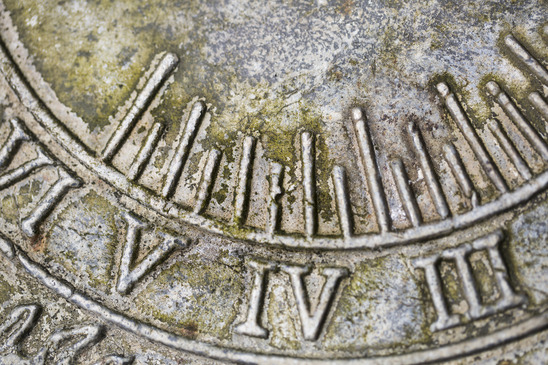The History of Roman Numerals
The history of Roman numerals began back in the 8th to 9th century BC, approximately the same time as the founding of ancient Rome around Palantine Hill. The number system prevailed longer than the empire itself, remaining in common use across much of the known world until the 14th century when they were superseded by the Arabic system, which was introduced to Europe in the 11th century .
The Roman numeral system was descended from ancient Etruscan numerals, itself adapted from the Greek Attic symbols.
The system was somewhat flawed in that there was no symbol for zero (0) and no real method for counting above several thousand other than adding lines around numerals to indicate multiples.
Notwithstanding, it did not prevent ancient Rome’s intellectuals and architects from building a great empire. Considerable mathematical skills were required to run a complex society and economy, and also to build vast monuments like the Colosseum and Constantine’s Arch.

How did Roman Numerals Take their Form?
There are several theories as to how the ancient Etruscan and Roman numerals were designed the way they were. One leading theory was that they derived from the tally sticks used by shepherds to count their cattle. The shepherds used to cut notches in their sticks, thus I became a single unit, every fifth (Λ or V) was a double-cut, and every tenth (X) a cross-cut.
The other main theory was that they were references to hand signals, with I, II, III, IIII corresponding to single fingers; V was demonstrated with the thumb out and fingers together. The numbers 6 to 9 were represented by using a V with one hand and I, II, III or IIII with the other hand, while 10 (X) was represented by crossing the thumbs.
Legacy of Roman Numerals
Not yet confined to sundials, roman numerals are still commonplace on watch and clock faces, book chapter headings, numbered points in print and on digital word-processing applications, film titles and many other places where a sense of classicism or style is required. Roman numeric characters are also used in many specialist subjects including pharmaceuticals, music theory, seismology, theology and photography.
See also: Roman Education
MLA Citation/Reference
"The History of Roman Numerals". HistoryLearning.com. 2025. Web.
